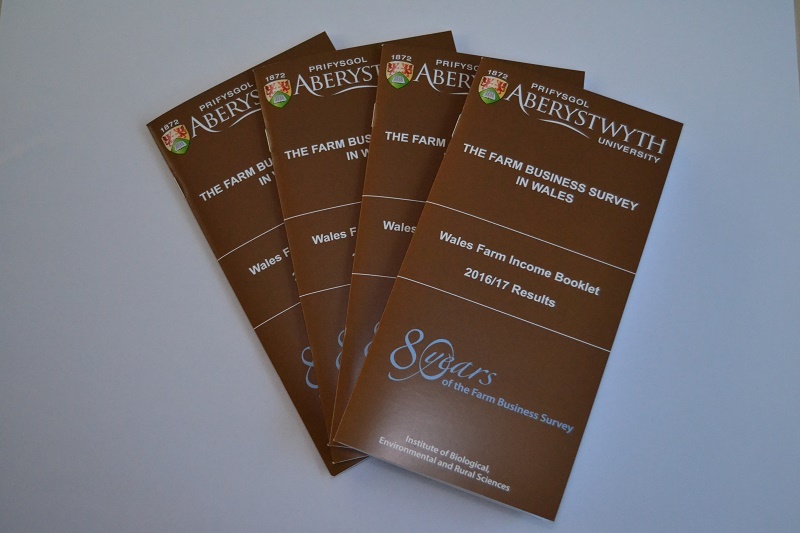Wales Farm Income Booklet

Wales Farm Income Booklet 2016/17
06 February 2018
Aberystwyth University’s latest Wales Farm Income Booklet, has been published by IBERS (Institute of Biological, Environmental and Rural Sciences).
The handy pocket sized book provides performance and benchmarking results from the Farm Business Survey (FBS) for 2016-17.
Tony O’Regan, Director of the Farm Business Survey said: “This booklet is aimed at providing farmers with a user friendly benchmarking tool and incorporates the latest financial and physical information for the main farm types in Wales. As Brexit looms, it should prove useful and informative in aiding farmers to adjust to new economic circumstances.”
To aid farmers the booklet features sections on Whole Farm Data, Gross Margins, and Total Cost of Production where the unit cost of producing a kg/litre of produce have been set out with benchmarking in mind.
The results highlight significant differences between ‘average’ and ‘top third’ performing farms. For example, the top third performing cattle and sheep farms’ £ per effective hectare profit was over double that of the average and so on average the top third farmers made an extra £30,000 on the upland £22,000 on the lowland cattle and sheep farms farm.
Likewise, on dairy farms top third producers made a net margin of 9p/l more than the bottom third which could potentially mean a six figure addition to profit. Meat producers showed similar variability with lamb producers ranging from making 42p/kg to losing 66p/kg, and beef producers ranging from plus 29p/kg to minus 145p/kg for every kilogramme (liveweight) that they sold.
The common trend every year is the range of profitability within the sample farms, for example the top third lowland cattle and sheep farmers retained 40% of output as profit, compared with 20% as an average. Similarly top third lowland dairy units achieved 23% of output as profit versus an average of 10%,” said Mr. O’Regan.
Particular attention also needs to be given to the Basic Payment Scheme, other subsidies and diversified income so that the contribution of the ‘farming’ enterprises to the bottom line can be examined. For example, these three sources contributed around 40% of outputs and potentially 172% of profits, on average, for hill sheep farms.
The data also shows the variation in performance between the average and the top performers and demonstrates the scope that might exists for improvements in performance and the financial benefits that could be achieved if performance could be raised.
Tony O’Regan recognises the support and assistance provided by farmers in Wales that provide data for the Farm Business Survey and said “Farmers across Wales will appreciate that the booklet contains accurate and reliable information with good size samples for each farm type. This booklet is a valuable tool which will help farmers benchmark their own performance”.
He added “Profitability is so important to all farm businesses and with the challenges of Brexit and other financial pressures on farmers in recent years, they need to be aware of their production costs. They need to know how their costs compare with those of other producers and how best to cope with and adapt their farming businesses to mitigate future economic challenges.
The Farm Incomes Booklet is kindly distributed on behalf of Aberystwyth University by Farming Connect to all farmers that have registered with the new Farming Connect Programme.



